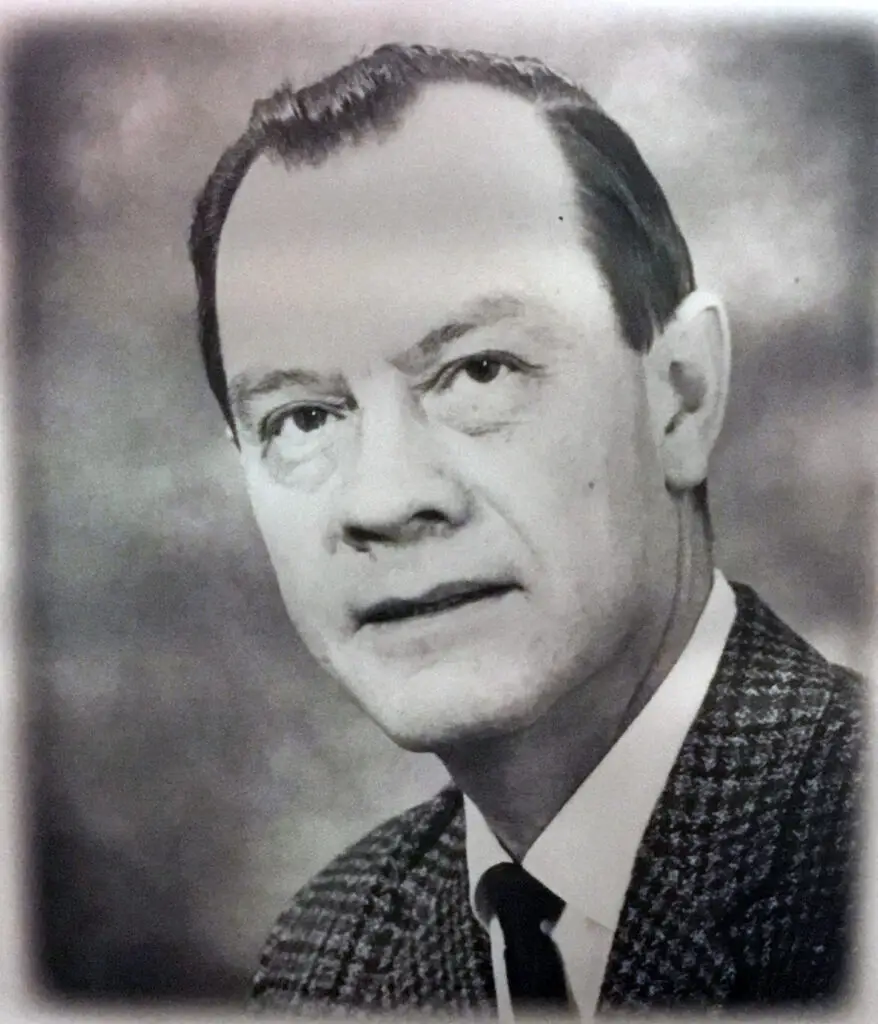Deciduous
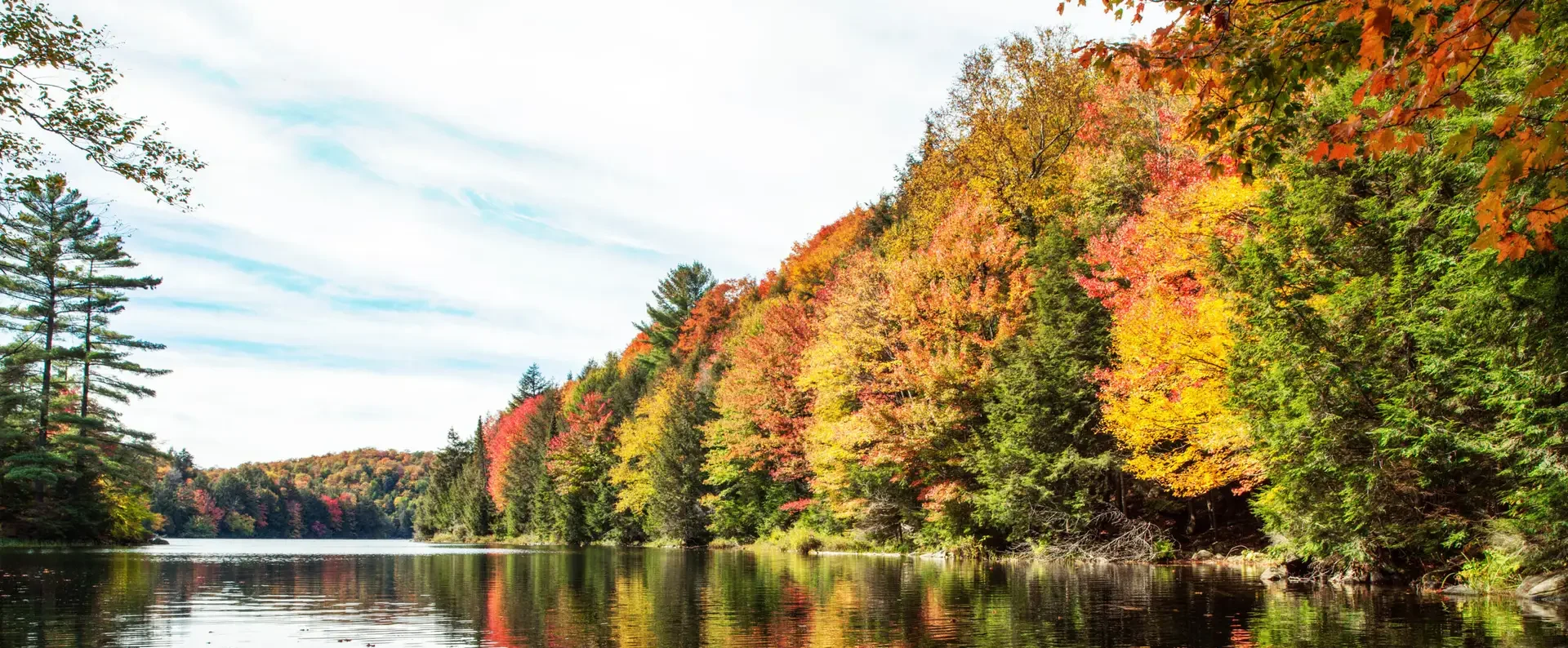
Deciduous trees are a type of tree that shed their leaves annually, typically in the autumn, as part of their natural growth cycle. These trees are known for their broad, flat leaves, which often change color dramatically in the fall before they are lost. Deciduous trees thrive in a range of temperate climates and are commonly associated with seasonal forests. Examples include oaks, maples, birches, and elms. Deciduous trees play a crucial role in ecosystems by providing habitats, food for wildlife, and contributing to soil enrichment through their fallen leaves. They are also valued for their timber, shade, and aesthetic appeal in landscapes.
Deciduous #6 Northern Pin Oak
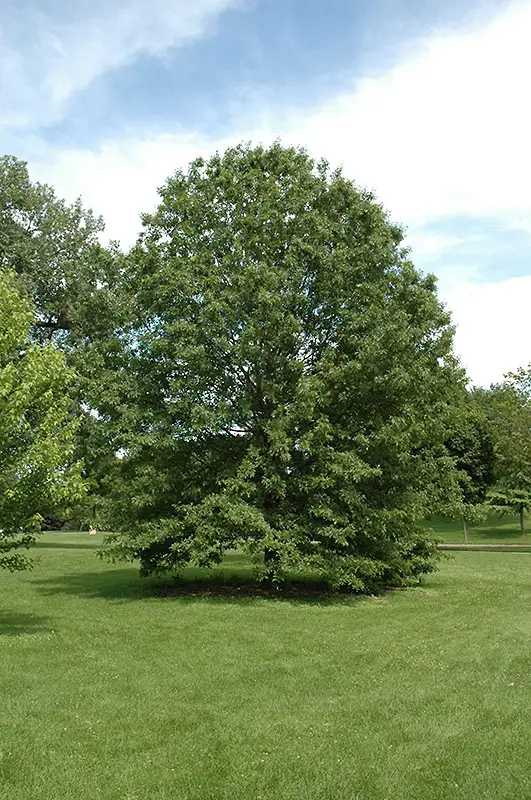
Northern Pin Oak
Chêne Pin
Quercus ellipsoidalis
Uncommon in Canada, this upland species occurs irregularly in Zone 3b, west of Lake Superior. It is related to similar oaks growing along Lake Erie on more sandy or wetter soils. It is easily transplanted to most soils and topography. Intolerant of shade, it grows rapidly.
Pin Oak is known to naturally hybridize with black oak around Lake Erie. Acorns are 12-18 mm long. Leaves are 7-12 cm long. Small, dead branches tend to project like pins from the trunk and larger branches. The specie is popular as an ornamental due to its form.
In Memory of Murray Edmund Watts
Murray Edmund Watts C.M., B.Sc., P.Eng., Order of Canada
Murray Watts born in Cobalt, graduated from the Haileybury Mining School in 1929. His impressive lifetime accomplishments in mining and exploration have significantly contributed to HSM’s proud distinction as a premier mining institute. In 1981, Murray was made a lifetime member of the C.I.M.M. and was bestowed the Order of Canada. He was later inducted into the Canada Mining Hall of Fame. Murray Watts was tragically killed in an automobile accident in 1982.
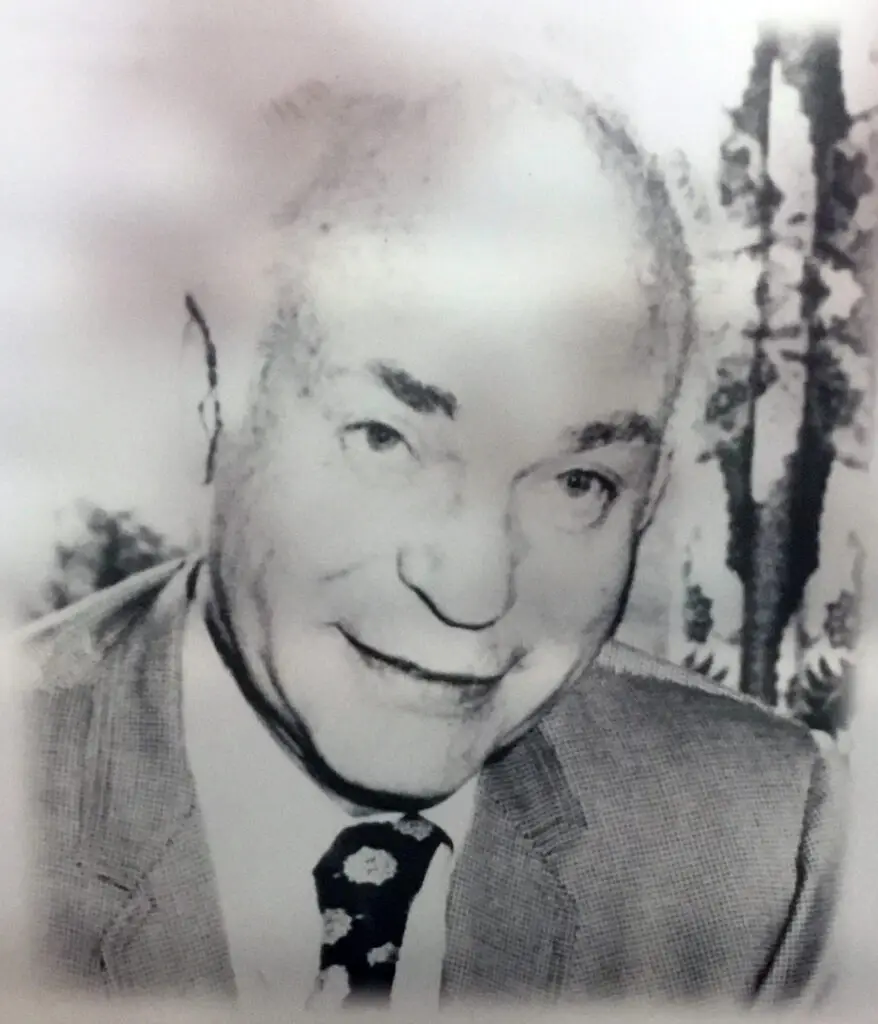
Deciduous #7 Eastern Cottonwood
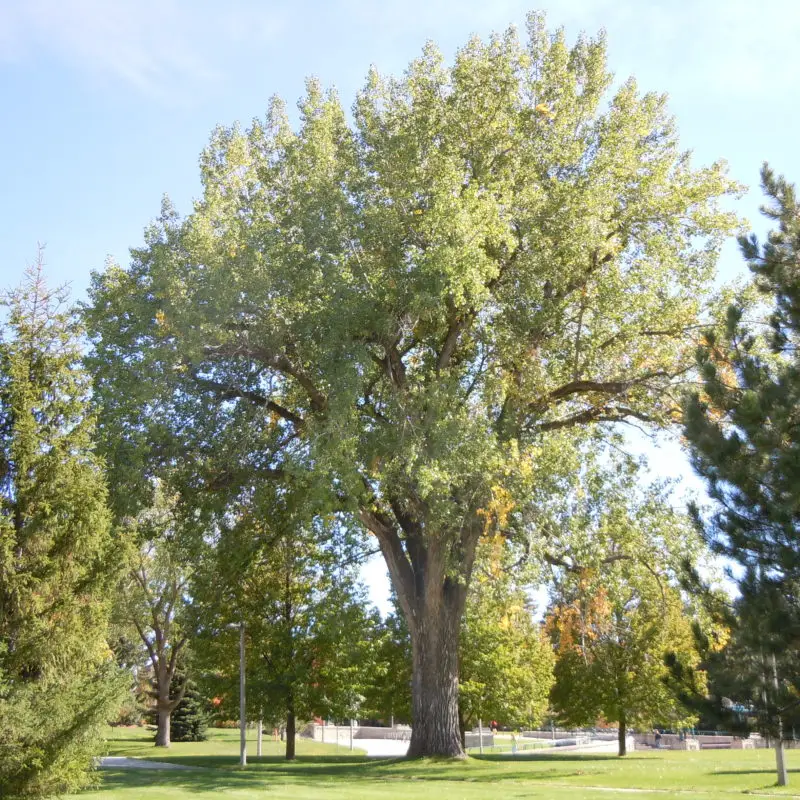
Eastern Cottonwood
Peuplier Deltoïde
Populus deltoides W.Bartr. Ex Marsh.ssp deltoides
This specie is common the the Lake Erie shoreline and the general area around Ottawa and Montreal. This particular exhibit was likely planted on this site after the Haileybury Fire of 2022. It’s massive, short trunk dividing into a few wide spreading branches is typical.
Eastern Cottonwood can reach a height of 30m and have a diameter of 1.2 meter. Root depth is variable and dependent on soils.The tree is used for cheap, fast growing shelter belts by pushing 30 cm stems into moist ground in the spring.
In Memory of Ossian 'Ossie' Edward Walli
Ossian ‘Ossie’ Edward Walli B.Sc., P.Eng.
Ossie arrived in 1945 as the first principal of the Provincial Institute of Mining. In 1967, Ossie was appointed the first President of Northern College and later retired in 1969, concluding a 44-year career in education. Ossian Walli died in 1991. In honour of his exhaustive work to raise the stature of the school and give it world-wide acclaim, he received an honorary doctorate degree and was inducted into the Canadian Mining Hall of Fame in 1993.

DECIDUOUS #8 GOLDEN WILLOW
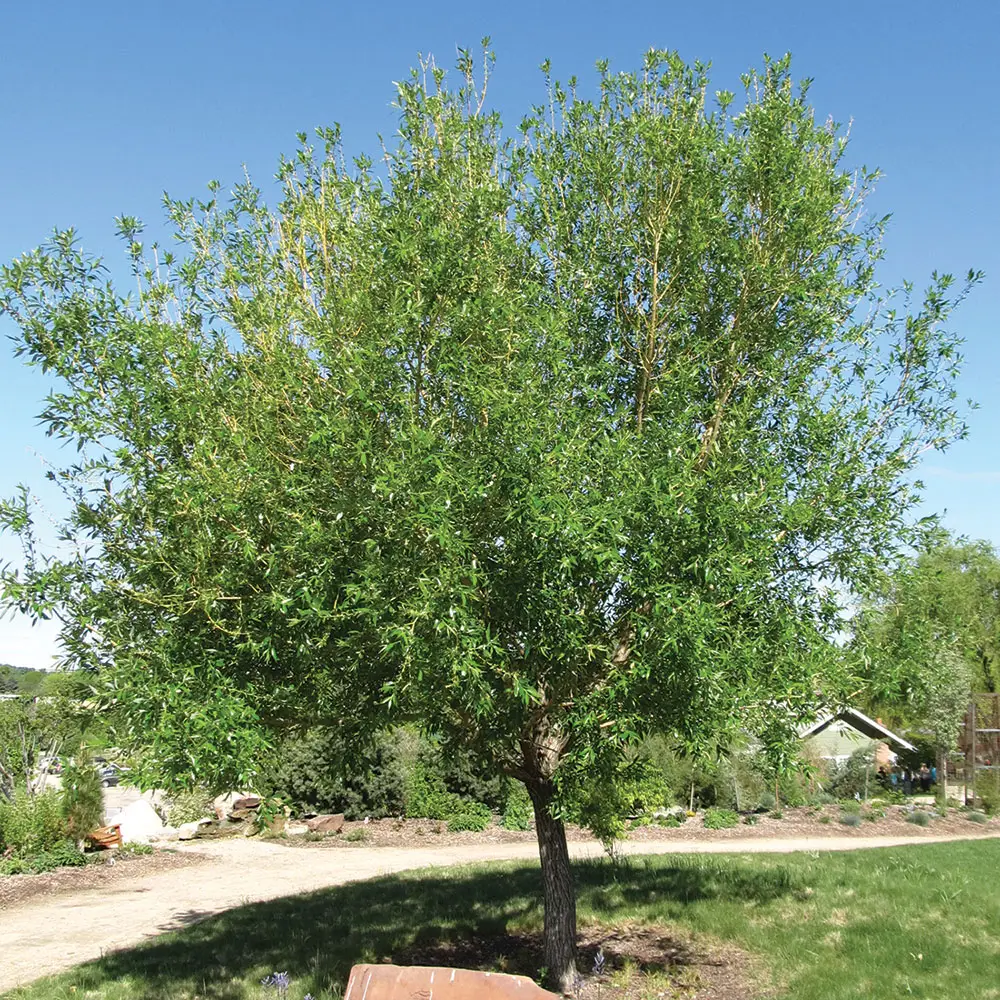
Golden Willow
Saule Jeune
Salix albs ‘Vitellina’
Introduced from Europe, Golden Willow is a cultivar of the “White Willow”. The Golden Willow is most often grown for its one and two year old stalks, that tend to be a bright yellow in winter. If not “coppiced”, the tree form takes shape and brown bark appears.
SAULE JAUNE can attain a height of 30m with a 1m trunk in Plant Hardiness Zone 2. Flowers form in early spring, on both male and female trees, for cross pollination. A single plant is therefore not “invasive”. It is most popular in it’s “Weeping Willow” format.
In Memory of Daniel W. Atchison
Daniel W. Atchison B.A., M.A., P.Eng., F.G.A.C.
Dan Atchison, known by most as ‘Jungle Dan’, started his teaching career at the Haileybury School of Mines in 1937 until its closure in 1943. Following the school’s reopening after World War II, Dan taught Geology and Mineralogy until his retirement in 1975. He was inducted into the HSM Alumni Hall of Fame in June 1979.
Sponsored by: Betty Lou (Atchison) Fancy
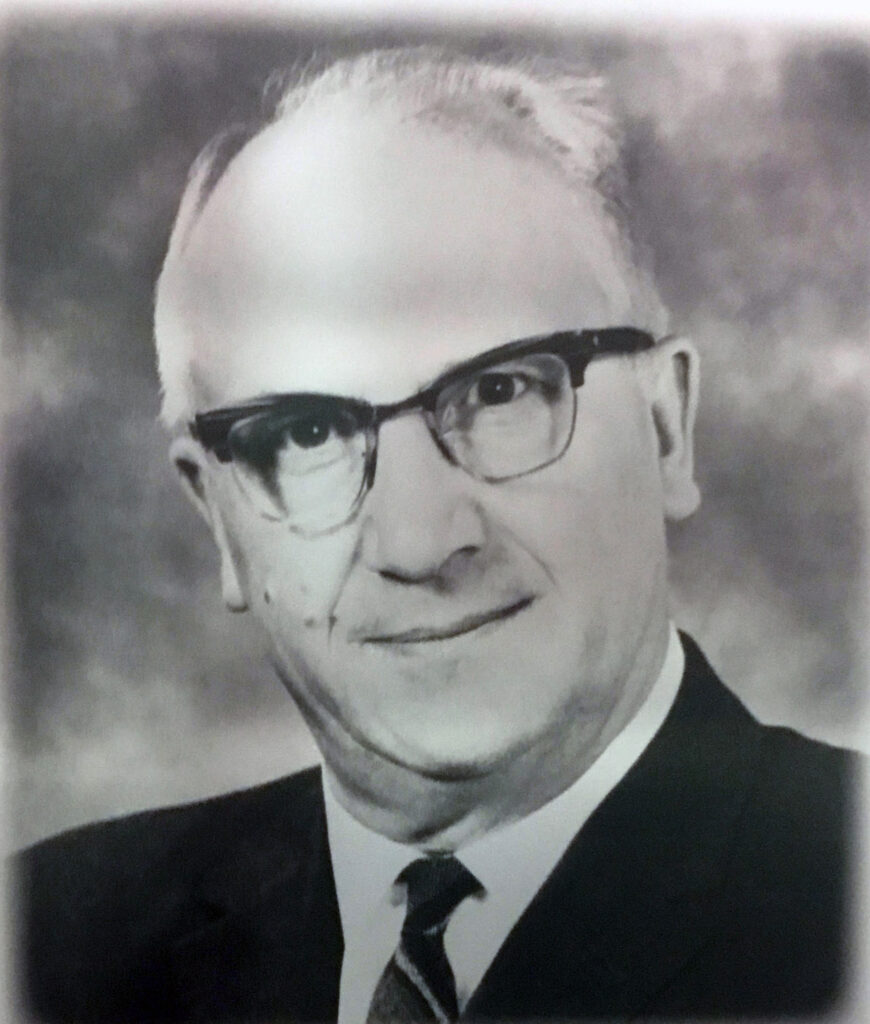
DECIDUOUS #10A SILVER MAPLE
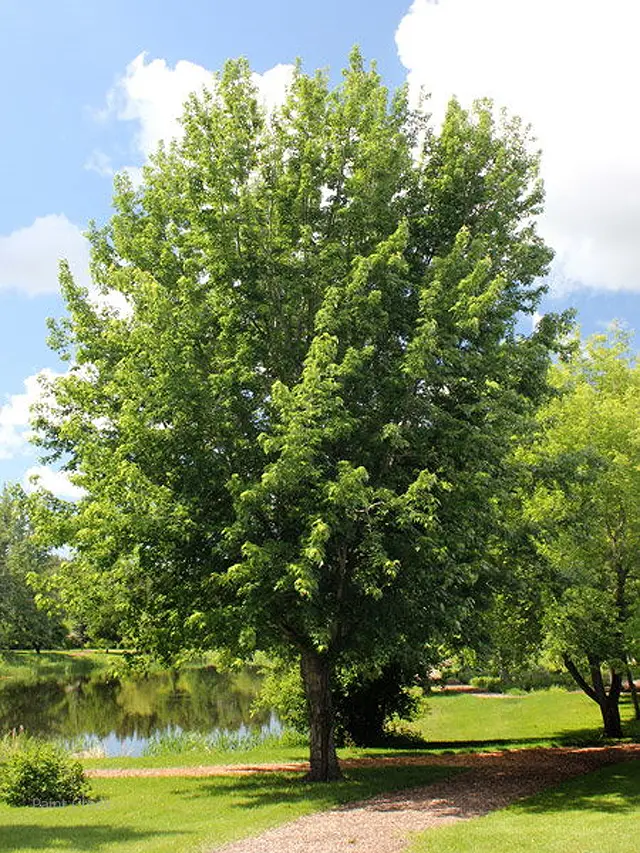
Silver Maple
Érable Argenté
Acer saccharinum L.
zhiishiigimewanzh (Ojibwe)
Less common than Sugar Maple but inhabits the same Forest Regions, this specie prefers moist bottom lands near waterways. It also has a shorter main trunk and a slimmer crown. Leaves are deeply notched and whitish (silvery) on the undersurface. Produces slightly less sugar.
ERABLE ARGENTE is fast growing with a 100 year life span. The tree will be 25.5m with a 1m diameter. (Best sites produce 37.5m trees.) The tree often develops a hollow trunk that is appealing to birds. Wood is not strong, limiting forestry values.
In Memory of Patricia Kathleen Bateman
In Memory of Patricia Kathleen Bateman (1918-2002) Loved Mum of the Bateman Family
DECIDUOUS #12 AUTUMN FANTASY MAPLE
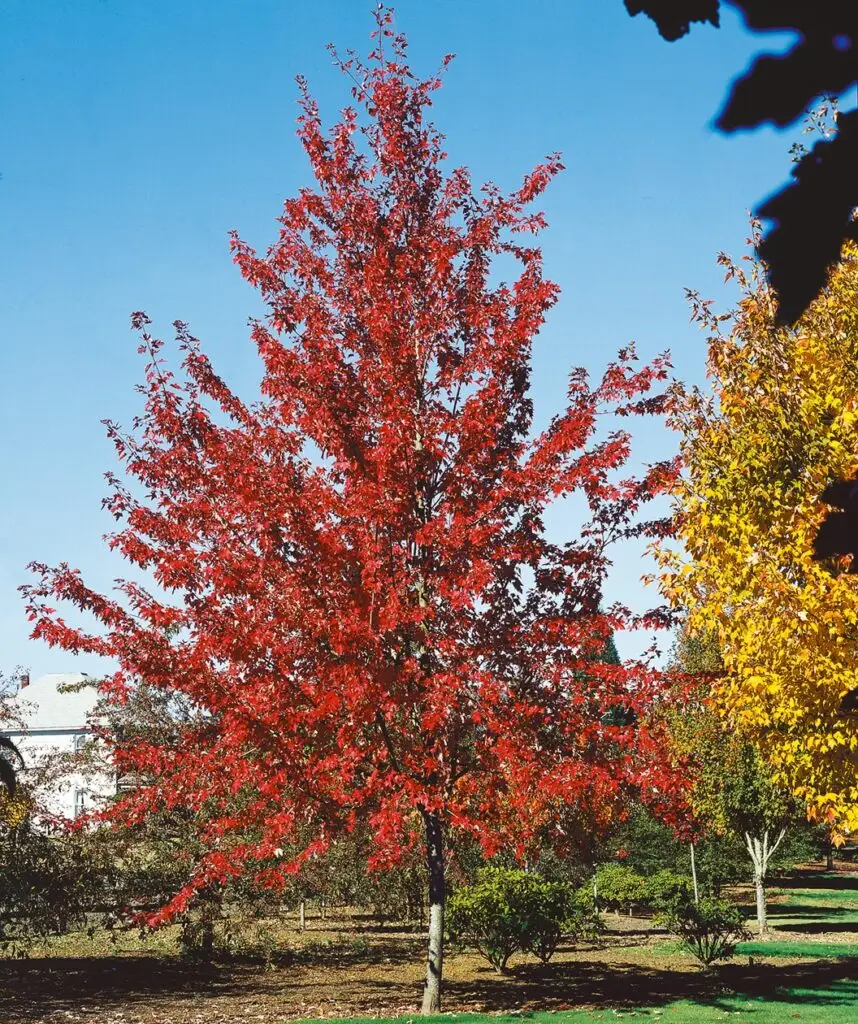
Autumn Fantasy Maple
Erable Freemanii
Acer x freemanii “Autumn Fantasy”
Designed for landscaping purposes, this HYBRID is fast growing and can pruned to be a standard 15m tree or to a more circular shrub. The colour is a brilliant Red that does not occur until late fall, as op-posed to the red early fall colours of Red Maple. For Hardiness Zone 3.
Autumn Fantasy is a “Freeman Maple” cultivar. It is a genetic cross of Red & Silver maples. It is a re-design of the hybrid “Autumn Blaze Maple”. The issue with Blaze was poor branch angles that resulted in continual pruning. Fantasy is superior for its better branch angles.
DECIDUOUS #15 STRIPED MAPLE
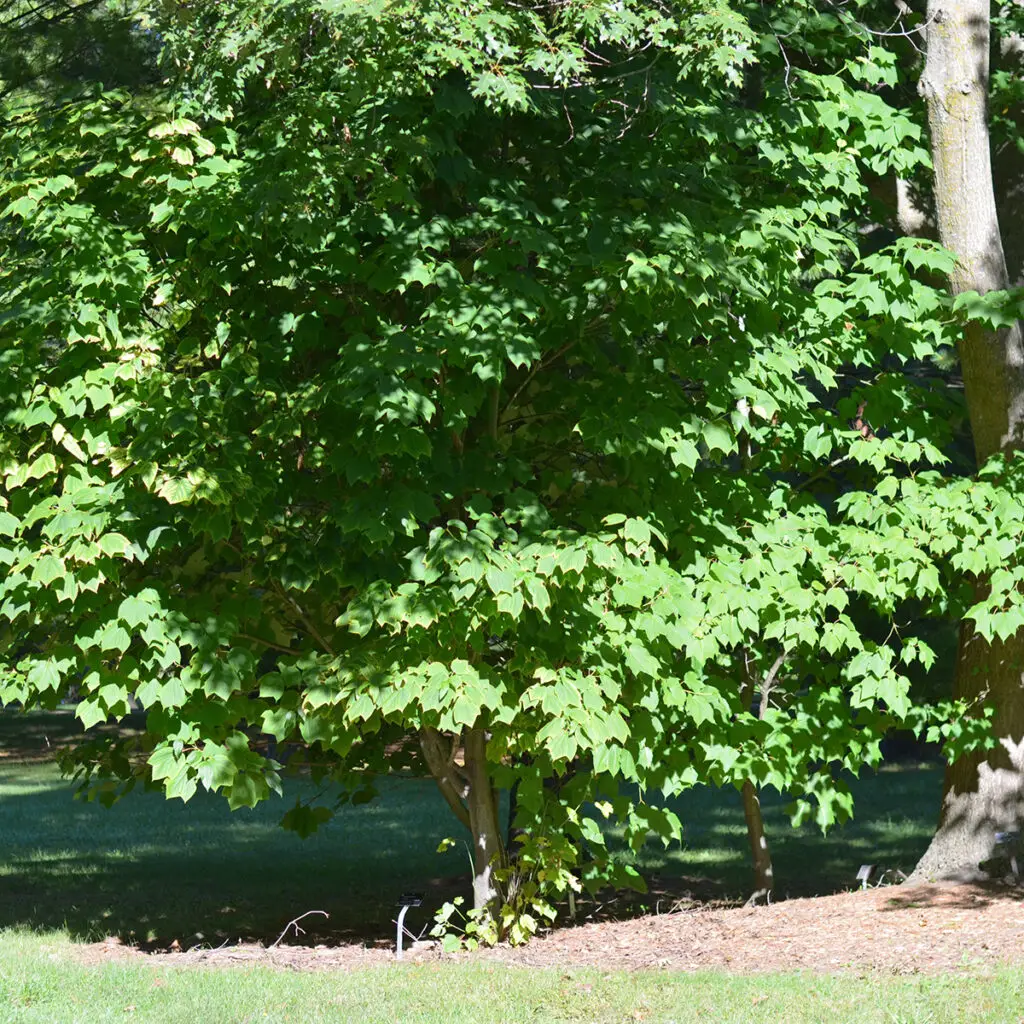
Striped Maple
Bois D’original
Acer pensylvanicum L.
moozomizh (Ojibwe)
A small understory tree with a massive, blocky 3-point leaf, it is found in Acadian and Great Lakes-St Lawrence Forest Regions with a northern limit of Zone 3. It grows best on well-drained soils in deep valleys, where heavy shade keeps acidic soil cool and moist.
BOIS D’ORIGINAL is a favourite food of Moose & Deer, this accounts for its common name of “Moosewood”. Under ideal (no grazing) conditions, it can attain a height of 12m. It has no economic value in forestry, but beautifies any forest landscape.
In Memory of John Mateer
John Mateer, a 1936 Queen’s University graduate and a Lieutenant with four years of service with the Royal Canadian Engineers during World War II, started his teaching career at the Haileybury School of Mines in 1966. John’s wealth of experience as a surveyor, geologist, and miner was an asset in his assigned subjects of Mining and Math. He retired in 1978, and died in 1985.

DECIDUOUS #18 MOUNTAIN MAPLE
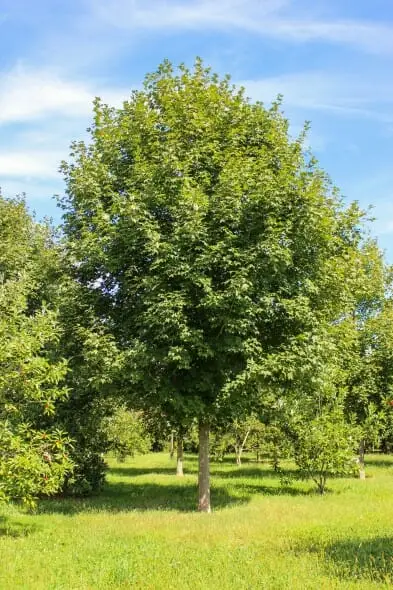
Mountain Maple
Érable a Epis
Acer spicatum Lam.
zhaashaagobiimag (Ojibwe)
This small understory tree has a number of crooked trunks arising out of a common root mass. It grows on well drained moist soils from the Atlantic, westward to E. Saskatchewan, and north to the edge of Plant Hardiness Zone 1. The wood has no economic value.
Mountain Maple is the smallest of the eastern maples. It grows as a shrub, to 7m tall. It’s stems are mainly a browse for wild ungulates. The keys are a food source for birds. Roots are densely layered. This controls erosion along waterways.
In Memory of W.A. Wilson
W.A. Wilson B.A.
Asbury Wilson, the first principal of Haileybury High School and School of Mines from 1910 to 1920, is credited as the visionary for the Haileybury Mining School. Primarily through his efforts and the assistance of local minders, Wilson set up part-time mining classes in 1912. In 1914, the Department of Education granted Haileybury High School permission to offer a three-year mining diploma program. Asbury Wilson died in 1954.
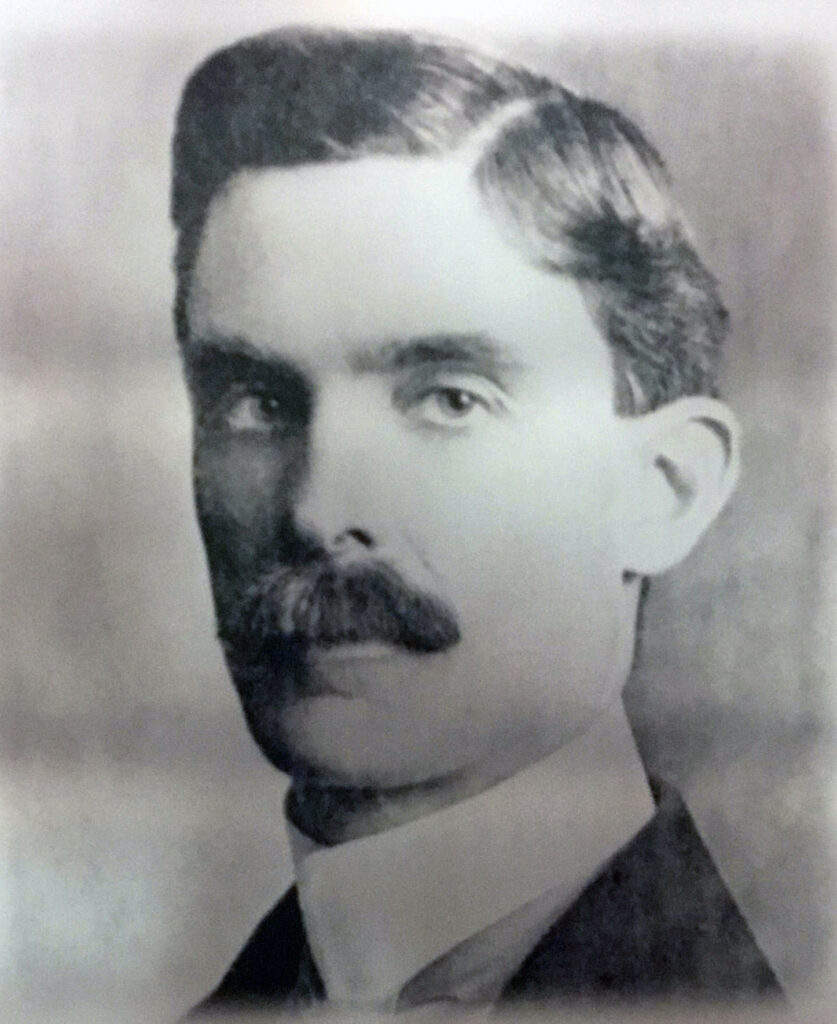
DECIDUOUS #20 SMALL-LEAVED LIME
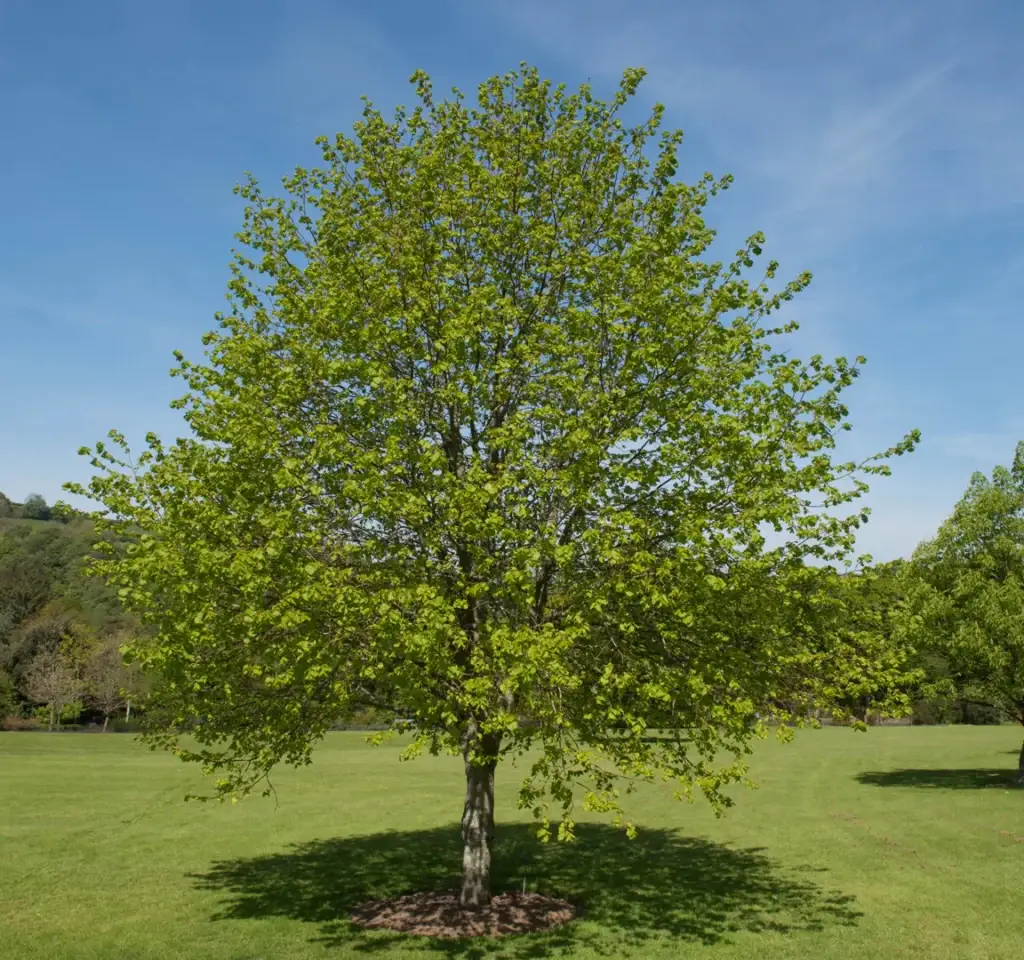
SMALL-LEAVED LIME
(aka LITTLE LEAF LINDON)
TILLEUL DES BOIS
Tilia cordata L.
Introduced from Europe, it is hardy in Planting Zone 3 (to -34C.) It has been traced to England back to 4800 BCE. Individuals can survive for centuries. It is invasive. Rockwalk Park Arboretum has three “Little Leaf Lindon” planted into deep well drained clay soil.
Small Leaved Lime grows 20-40m tall, with a trunk up to 1m diameter. Due to the rounded crown and overall pyramidal shape the tree is much desired. It serves as an ornamental in a public setting. The tree does best is a soil pH range of 5.0 to 8.0.
In Memory of Napoleon 'Paul' Morissette
Napoleon ‘Paul’ Morissette
Paul Morissette, of Haileybury, is best known as the original founder and owner of Morissette Diamond Drilling Ltd., one of the world’s most prolific diamond drill contractors since 1926. Paul also took an active role in the interest of the Provincial Institute of Mining and School of Mines as an Advisory Board member from 1944 until his death in 1968.

DECIDUOUS #26 WATER BIRCH
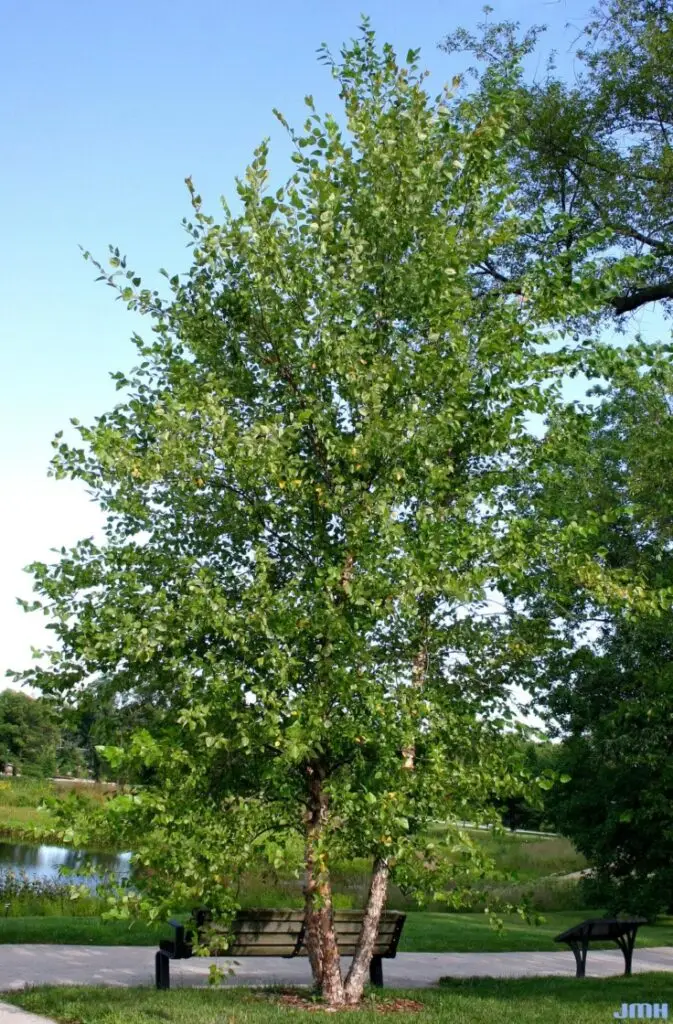
WATER BIRCH
BOULEAU fontinal
Betula occidentalis
Wusko (Cree)
Common in western Canada and as far north as the Arctic shoreline, it appears as a small shrubby tree with stems in clumps. Grows to 12 meter high and 30 cm diameter (smaller as you move north). Unique in survival at Plant Hardiness Zone 0. Hybridizes with paper birch.
Water Birch is regionally known as Western Birch, River Birch, Red Birch and Black Birch. It grows beside poplar, willow, and alder, but sometimes forms dense thickets by itself. First Nations use the bark and leaves for medicinal purposes. Also used in craft projects.
In Memory of William Henry Durrell
William Henry Durrell P.Eng.
Bill Durrell graduated from Haileybury in 1921 and is considered one of the most acclaimed graduates of the early School of Mines. A born leader with a strong determination for progress, Durrell’s work in the iron ore fields of Quebec and Labrador was one of many mammoth projects he undertook during his career. In 1954, Bill Durrell was appointed Vice-President of the Iron Ore Company of Canada and was instrumental in the completion of the railway link from Sept-Iles Quebec to Labrador. Bill Durrell died in 1963 at the age of 59.
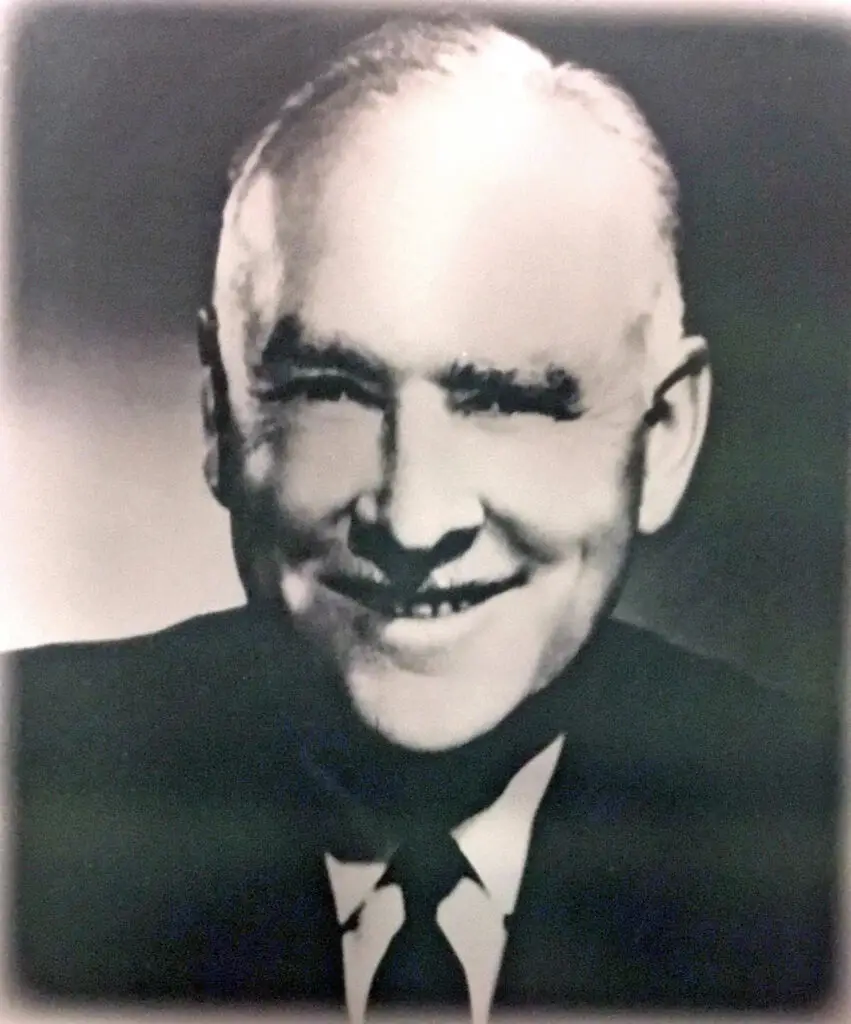
DECIDUOUS #34 NANNYBERRY
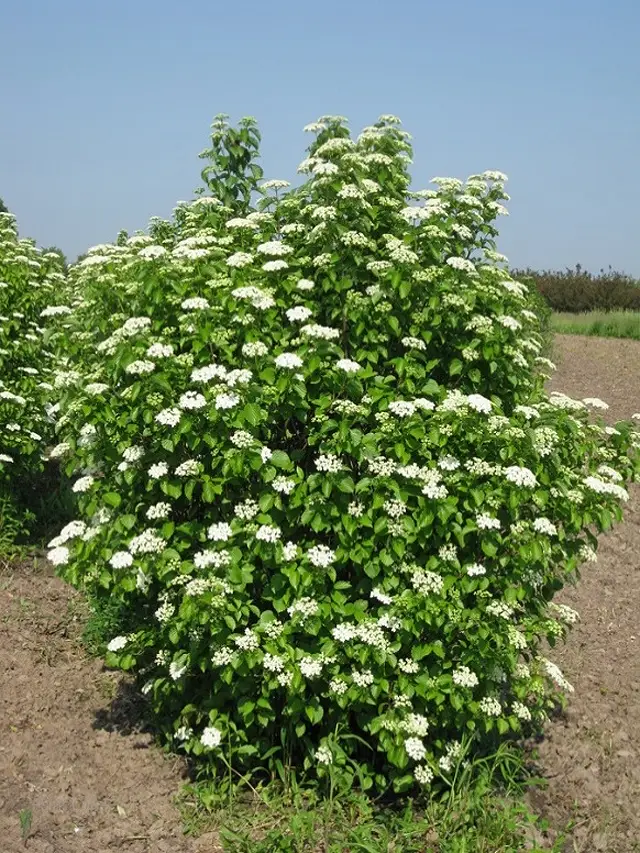
NANNYBERRY
VIORNE flexible
Viburnum lentago L.
aditeminagaanwanzh (Ojibwe)
A member of the Honeysuckle family, Nanny Berry is found acrosssouthern Ontario as far north as North Bay (Hardiness Zone 4). It grows in Plant Hardiness Zone 2 in Manitoba. Found along waterways, it can form a tall, rounded shrub with a crooked trunk.
The fruit is edible, in bluish-black drooping clusters with a flat, oval shape. Seeds are hard and flat. However, the plant will also spread by shoots extending from the roots. Stems are smooth and brown when young, eventually becoming rough and scaly.
In Memory of Clarence W. Tyson
Clarence W. Tyson B.A.Sc., M.A.Sc., P.Eng.
Clarence ‘Plumbob’ Tyson began his teaching career in 1945 under the new Provincial Institute of Mining. His subjects included English and Shop but during his 24 years at the school, he was best remembered for his skills in Surveying. Clarence was inducted into the HSM Hall of Fame in 1970. Clarence Tyson died in 1971 in Owen Sound, Ontario.
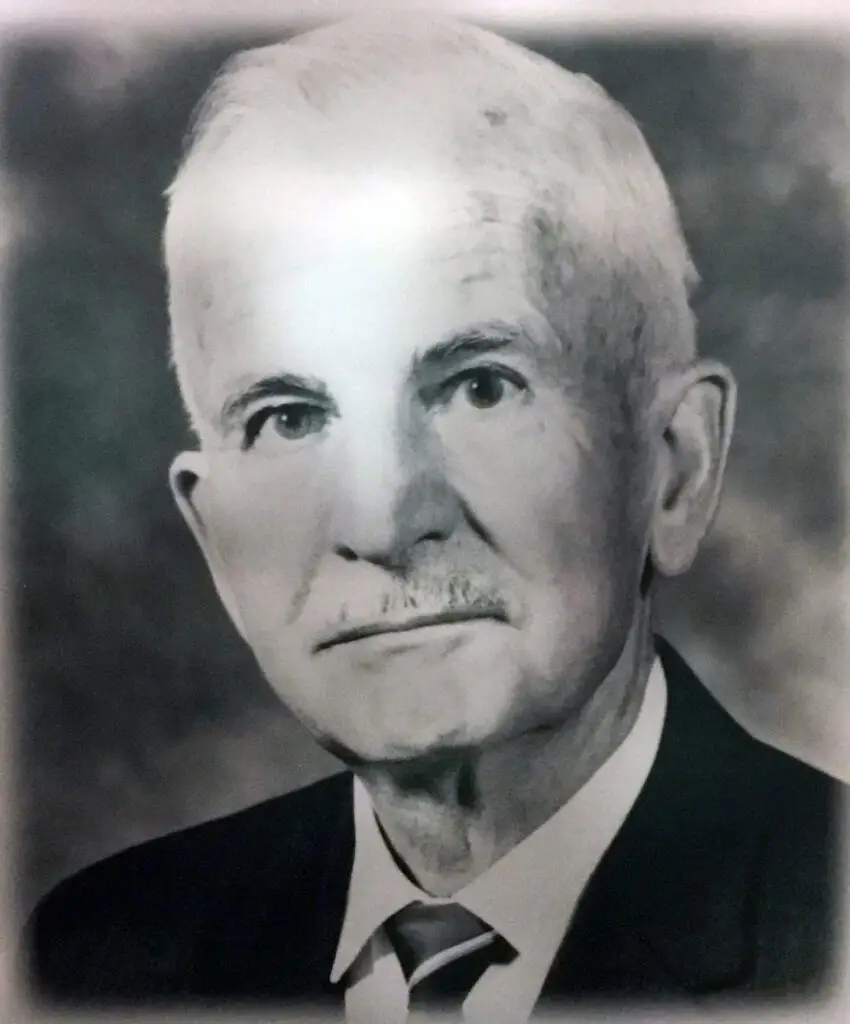
DECIDUOUS #40 RED OSIER DOGWOOD
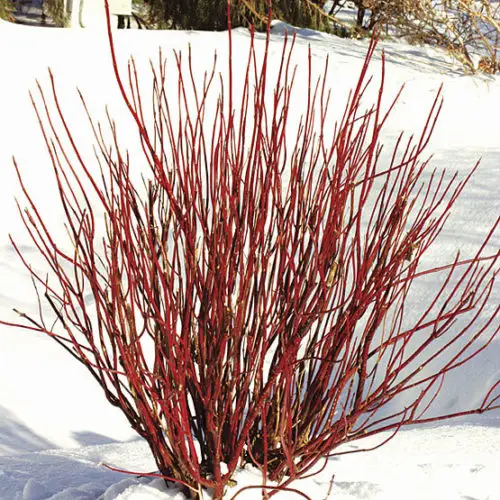
RED OSIER DOGWOOD
CORNOUILLER HART ROUGE
Cornus sericea L.
miskwaabiimizh (Ojibwe)
This specie grows across Canada up to Hardiness Zone 1. It maintains the form of a multi-stemmed shrub habit, but can grow up to 3m in warmer zones. It is noted for its deep red stems in winter that turn into a bright red come spring, when the sap starts to flow.
Red Osier Dogwood has deep green “silky” leaves. The clusters of creamy-white blossoms turns into a set of white drupes with a black dot, eaten by 47 bird species. The stems are devoured by beaver, rabbits, and moose. AKA Redtwig and Redstem Dogwood.
In Memory of Donald Burke
Donald Burke B.Sc., P.Eng.
Don Burke was a 1931 Mining Geology graduate of the University of Alberta and a military Major with four years of service with the Royal Canadian Engineers during World Ware II. He joined the faculty at Haileybury in 1962. Experienced in many aspects of mining and metallurgy, Don taught Chemistry for 13 years before his retirement in 1975. He was inducted into the HSM Hall of Fame in 2004.
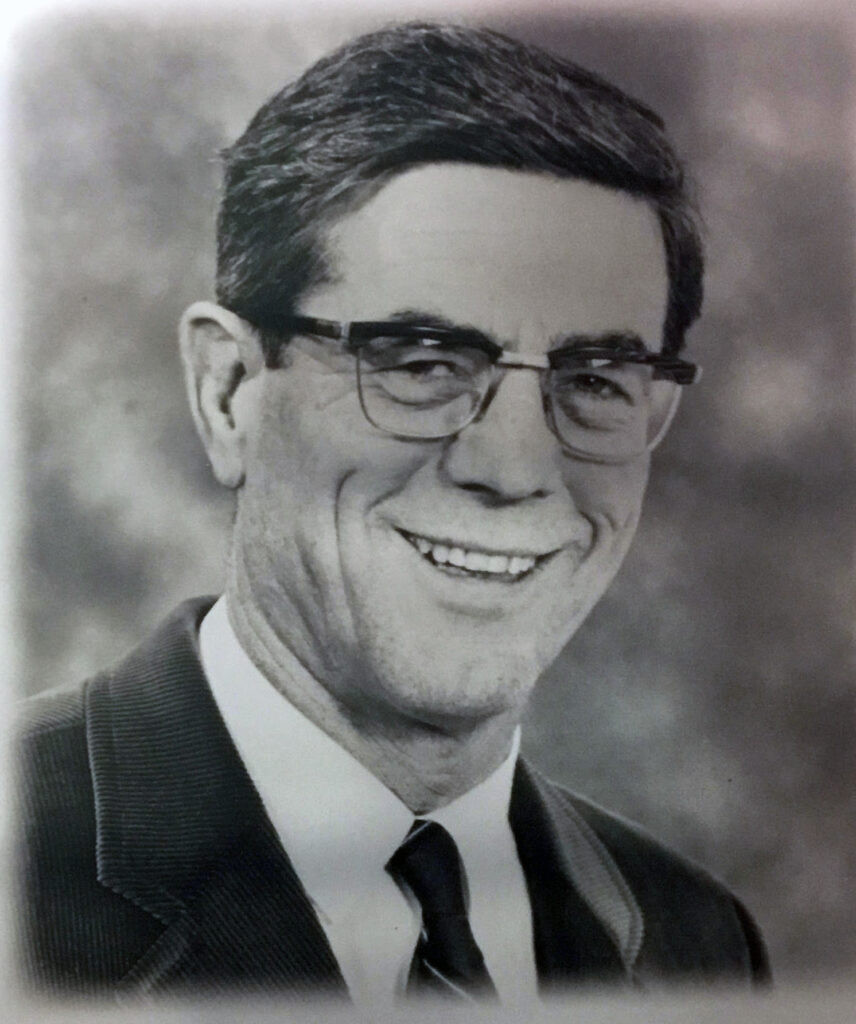
DECIDUOUS #42 ALTERNATE-LEAF DOGWOOD
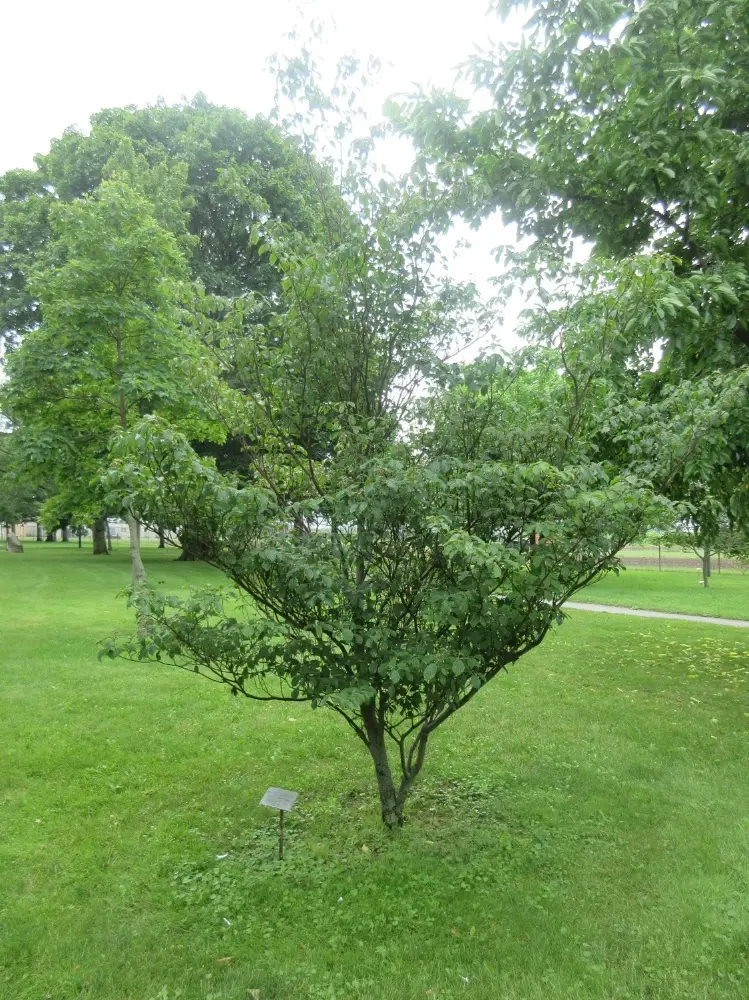
ALTERNATE-LEAF DOGWOOD
FEUILLES ALTERNES
Cornus alternifolia L.f.
moozomizh (Ojibwe)
Found in the Acadian, Deciduous, and Great Lakes-St. Lawrence Forest Regions, its range extends to Zone 3 by Lake Temiskaming. It grows best in well drained deep soils in open woodlands or by swanps and streams. It has a tree form, reaching a height of 7m on multiple stems.
Alternate-leaf dogwood leaves do not always appear to be “alternate” because of the shortness of upper twigs. Check for other clues, such as leaves that are dark green on top but whitish below with shiny reddish-brown stems. Fruit is a dark blue drupe with white coating.
In Memory of William S. Tuke
William S. Tuke
Bill Tuke was the second principal of Haileybury High School and the Haileybury Mining School from 1920 to 1943. Described by many as an excellent disciplinarian, Tuke was instrumental in bringing many new positive developments to the program including a new mill building and a large expansion to the facility in 1931.
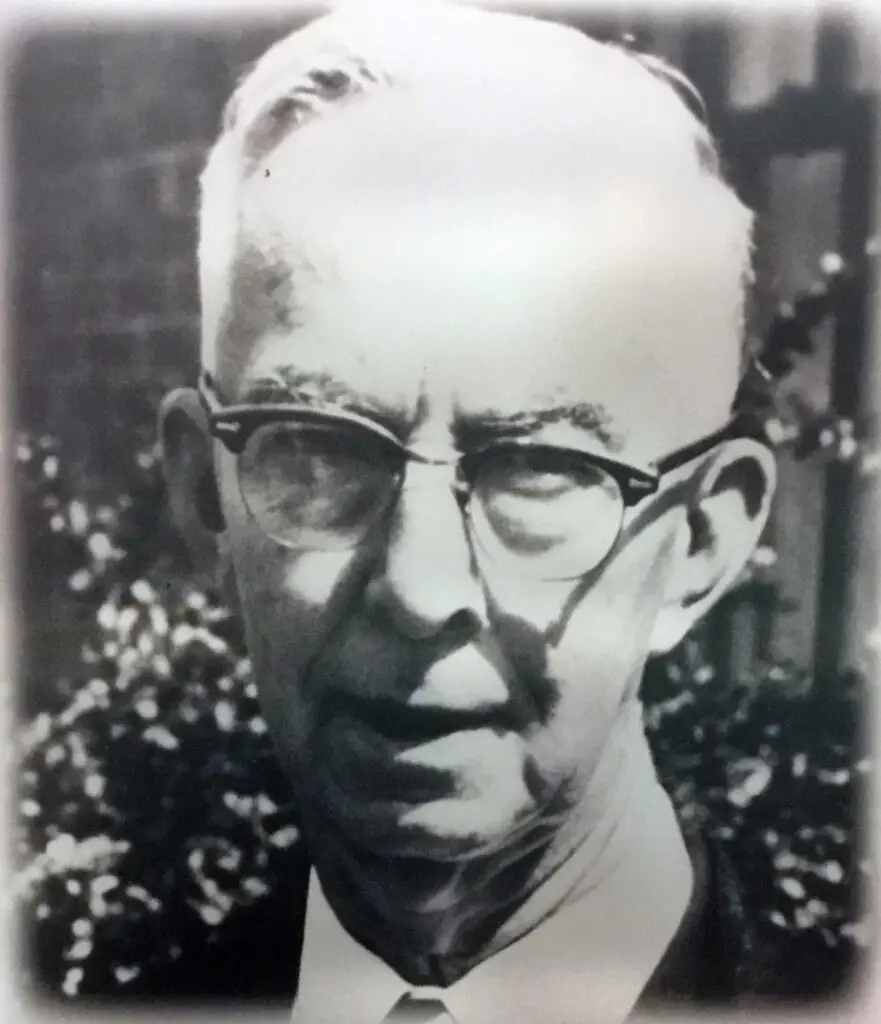
DECIDUOUS #45 AMERICAN BUSH CRANBERRY

AMERICAN BUSH CRANBERRY
VIORNE PIMBINA
Viburnum trilobum Marsh.
niibimin (Ojibwe)
Native from Nfld. to B.C., this shrub is NOT a “true cranberry”, but is named for the fruit that looks superficially like bog cranberries and ripens at a similar time (fall). The berries are orange to red, & edible when cooked. They are popular for jams, jelly, and wine.
This specie is a member of the Honeysuckle Family, growing in Zones 2 through 7. It can achieve 4m in height, with a full plant being 3m wide. Tolerant of frost & drought, it grows in partial sun on well drained moist soil. Fruit holds to stems over winter.
In Memory of Murray B. Glazier
Murray B. Glazier M.C.I.M.
Murray Glazier began his teaching career in 1929 when the mining program was under the direction of Haileybury High School. At the time he taught Mining, Physics, Surveying, and Drafting. Murray rejoined the faculty following the school’s reopening in 1945 and continued teaching until 1957. Murray Glazier died in 1964.
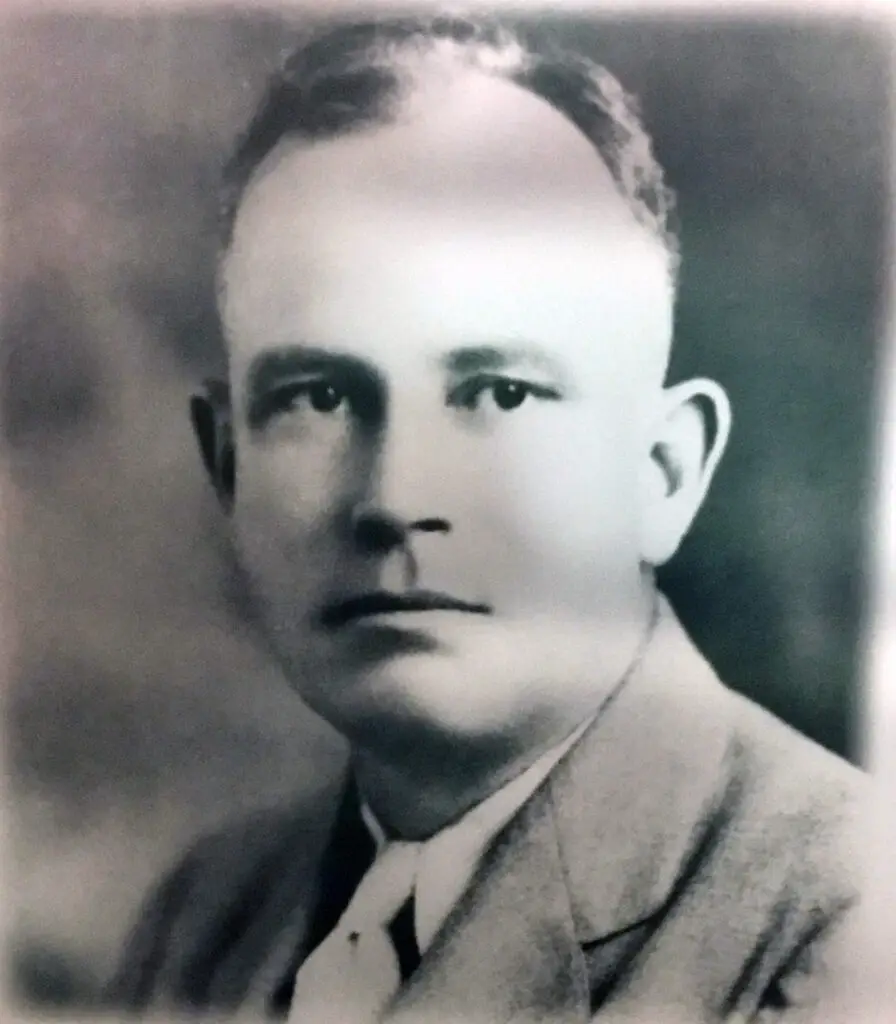
DECIDUOUS #47 NORTHERN GOLD FORSYTHIA

NORTHERN GOLD FORSYTHIA
FORSYTHIA
Forsythia ovata
This is a variety developed by Agriculture Canada for landscaping in Plant hardiness Zone 3. It will grow to 2.4m, and will spread to 2.1m. It will consistently bloom every spring, with little maintenance. The brilliant primrose yellow tubular flowers will last for several weeks.
FORSYTHIA is compact and upright in form. Leaves are oval shaped and dark green. Water is required during drought. Cut to ground level after spring bloom, every few years to allow for rejuvenation. Any soil or pH will do! Forsythia is the first shrub to bloom in spring!
In Memory of Gladys Forsythe
Celebrating the life of Gladys Forsythe by Bob, Brendà, Brian, Robin, & Ben Forsythe
DECIDUOUS #54 FLOWERING CRABAPPLE
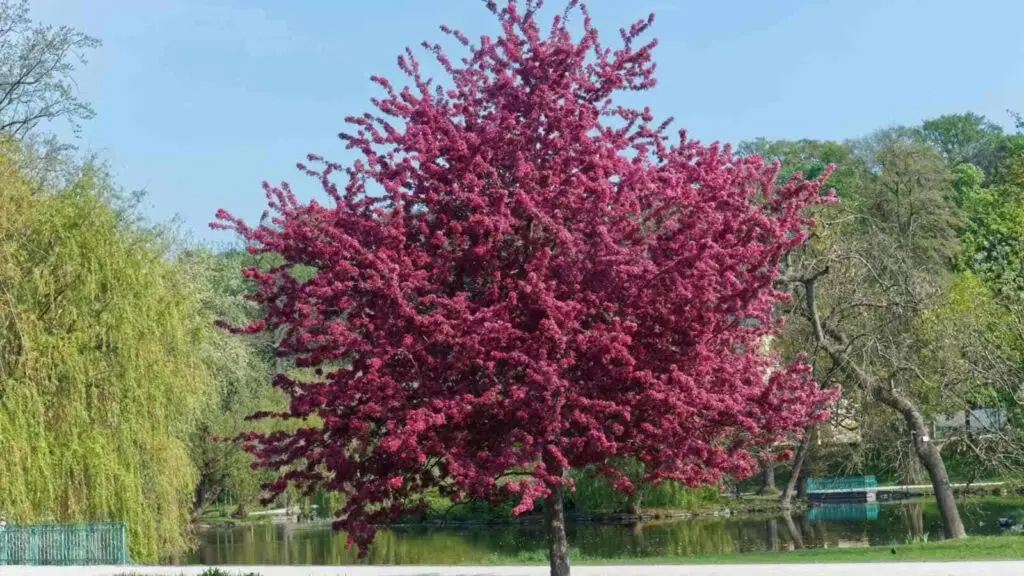
FLOWERING CRABAPPLE
POMMIER FLEUR
Malus x adstringens
(HYBRID)
There are many hybrid varieties to choose from. The ideal selection would first be evaluated by its local “Plant Hardiness Zone”. That is Zone 3 in Temiskaming. They require well drained soil (pH 5.5-6.5) of average fertility & plentiful sunlight. Water in the first year.
Flowering Crabapples are chosen for their flowers. The crab apples themselves are tart, but edible: best used in cooking. Trees will usually be 4m or taller, however there are “dwarfs” available. Pruning in late fall is required for disease control via air flow.
In Memory of Constable Albert Dower
DECIDUOUS #55 “WILD” CRABAPPLE
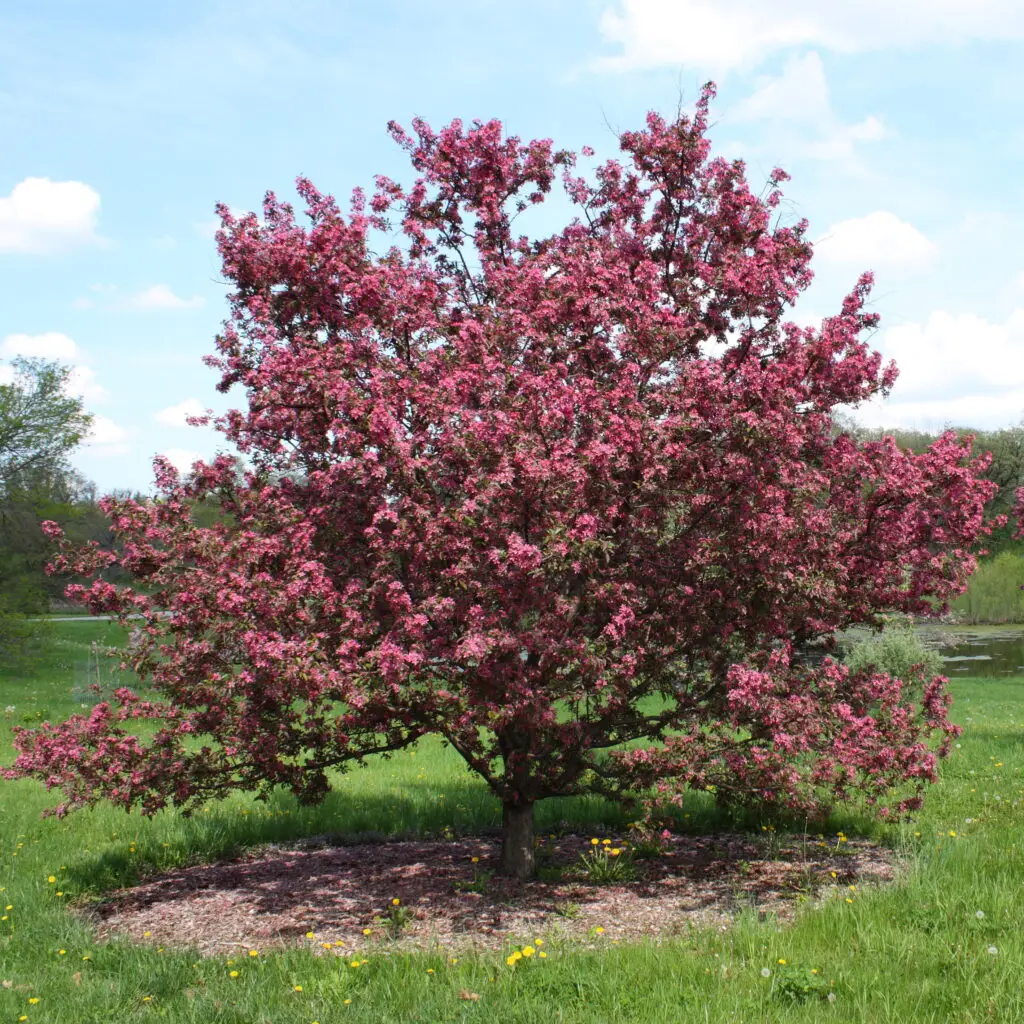
“WILD” CRABAPPLE
POMMIER SAUVAGE
Malus sylvestris
mishiimin (Ojibwe)
In Ontario, “wild” Crabapples only occur near Lakes Erie & Ontario. They were found to be ideal for pollinating domestic apples that originated in Asia. Varieties under 2 inches (5cm) diameter are designated as “Crabapple”. Feral (escaped) “Crabs” are everywhere.
Crabs were propagated widely. They were planted in emerging towns such as Cobalt. For decades, people would walk the rail line, eating “crabs” & tossing cores to the ditch. Some seeds germinate creating “Escaped” crabapple trees that produce fruit annually.
In Memory of In Memory of Rev. Ivan Dambrowitz
In memory of Rev. Ivan Alexander Dambrowitz, (1942-2005) from Brenda Forsythe, pianist, St Andrew’s Presbyterian Church
Ivan Alexander Dambrowitz
On May 9, 2005 in Dorchester, Ontario, Ivan Dambrowitz died in his sixty-third year with courage and grace surrounded by the love and care of his family and many friends.
Mr. Dambrowitz is survived by his wife Cecelia (nee Dunkin); children Christopher (Amy) and Timothy (Michelle); grandchildren Trenton, Katey and Ian; mother Jessie Dambrowitz; siblings Ottily (Jim), Sylvia (Mike), John (Louise), Fred, Georgina (Doug), George (Helen), Ted (Gisele), Lillian (Gordon) and Cathy (Colin); cousins, nieces and nephews; life-long buddy Jack (Ruth), dear Kay Stevenson (Anny), goddaughter Tracey and many faithful friends and colleagues.
He was predeceased by his father Ernie Dambrowitz.
A celebration of Mr. Dambrowitz’s life was held at St. Andrew’s Presbyterian Church in New Liskeard on May 13 followed by interment at the Pioneer cemetery in New Liskeard.
The family thanked Dr. Dunkerly and Dr. Swift and all the medical team in London who provided such care.
Memorial donations to the Canadian Bible Society, the Canadian Cancer Society or a charity of choice would be appreciated by the family.
DECIDUOUS #56 ORCHARD APPLE
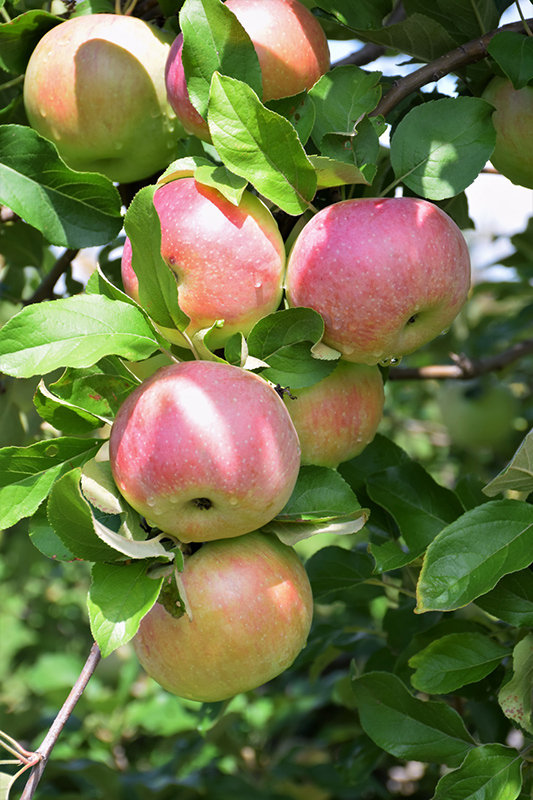
ORCHARD APPLE
Le POMICULTURE
Malus x domestica
(DWARF HYBRID)
All domestic apples originated in Asia. Ontario has an apple industry that is based on creating NEW hybrids that meet the ever changing demands of the public and the food industry itself. “Northern Spy” was popular for 2 centuries. It has been replaced by many others.
The Apple Industry of Ontario is supported by the Ministry of Agriculture and Food. Knowledge of growing and protecting this valuable crop is now researched, trialed, verified, and amalgamated into information packages for the Ontario Grower.
In Memory of Rev. Ivan Dambrowitz
In memory of Rev. Ivan Alexander Dambrowitz, (1942-2005) from Paul Bateman
Ivan Alexander Dambrowitz
On May 9, 2005 in Dorchester, Ontario, Ivan Dambrowitz died in his sixty-third year with courage and grace surrounded by the love and care of his family and many friends.
Mr. Dambrowitz is survived by his wife Cecelia (nee Dunkin); children Christopher (Amy) and Timothy (Michelle); grandchildren Trenton, Katey and Ian; mother Jessie Dambrowitz; siblings Ottily (Jim), Sylvia (Mike), John (Louise), Fred, Georgina (Doug), George (Helen), Ted (Gisele), Lillian (Gordon) and Cathy (Colin); cousins, nieces and nephews; life-long buddy Jack (Ruth), dear Kay Stevenson (Anny), goddaughter Tracey and many faithful friends and colleagues.
He was predeceased by his father Ernie Dambrowitz.
A celebration of Mr. Dambrowitz’s life was held at St. Andrew’s Presbyterian Church in New Liskeard on May 13 followed by interment at the Pioneer cemetery in New Liskeard.
The family thanked Dr. Dunkerly and Dr. Swift and all the medical team in London who provided such care.
Memorial donations to the Canadian Bible Society, the Canadian Cancer Society or a charity of choice would be appreciated by the family.
DECIDUOUS #57 "HERITAGE” DOMESTIC APPLE
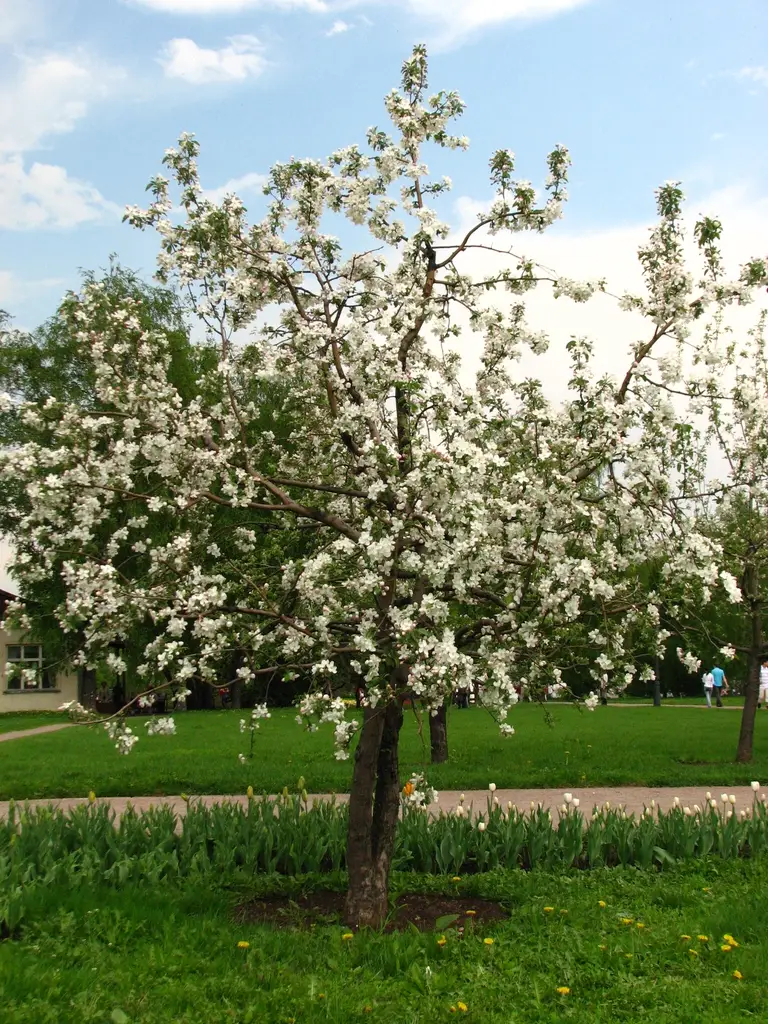
“HERITAGE” DOMESTIC APPLE
Le POMICULTURE
Malus x domestica
There are certainly hundreds, if nor thousands of apple varieties in North America, and many more globally. Prior to WWI, the majority of people lived on a farm, and almost every homestead had apple trees. That trend extended to the urban back yards as well.
Apple varieties popular in Ontario and Quebec in the late 1800’s & early 1900’s included Fameuse (snow apple) & McIntosh. Both good eating, fair for cooking, and stored until January. Northern Sky stored until March, while Winesap was good for cooking until May.
In Memory of Paul Bateman
In loving memory of Geologist and Educator Paul Bateman by his students at Haileybury School of Mines
Paul John Bateman Obituary
Peacefully, at his residence on Thursday, March 12, 2015. Paul Bateman age 70 years. Devoted partner and best friend of Brenda Forsythe. Treasured father of Erin Bateman-Snoxell and her husband Simon Snoxell of Ethiopia. Brilliant grandfather of Oliver and Elizabeth Snoxell. Amazing brother of Penny Bateman of Long Sault. Friends may call at the Valley Funeral Home, Deep River on Thursday, March 19 from 7-9 p.m. A Memorial Service will be celebrated in the Deep River Community Church on Friday, March 20 at 2:00 p.m. In memoriam donations to the Deep River Community Church would be gratefully appreciated.

DECIDUOUS #60 HACKBERRY
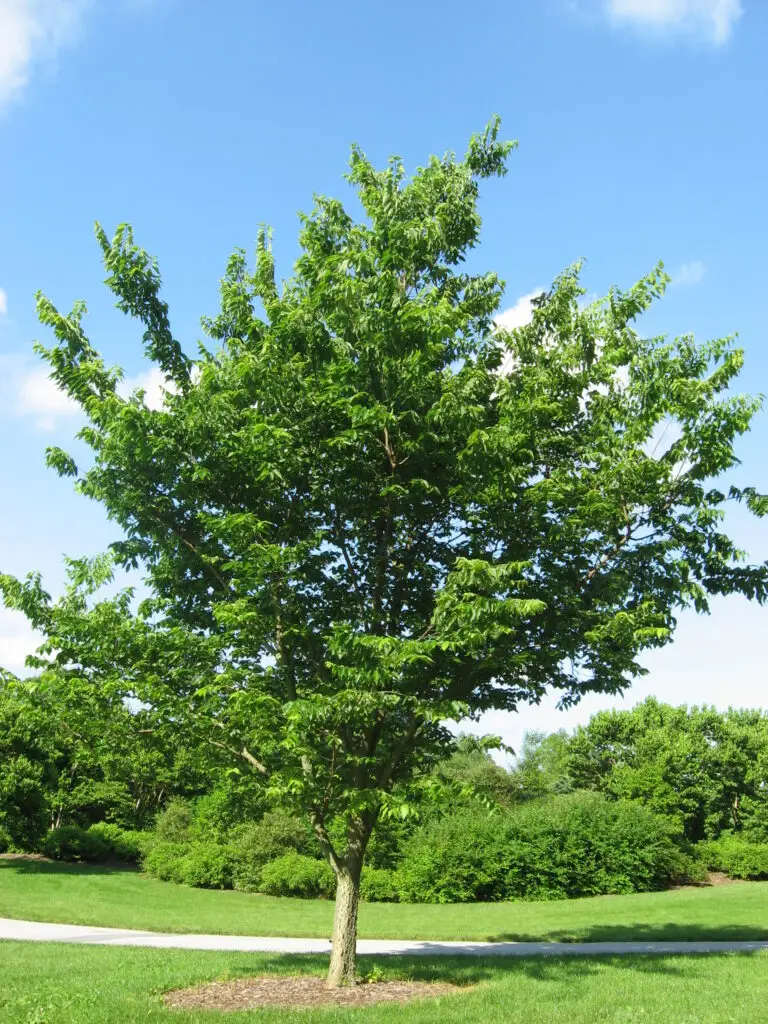
HACKBERRY
MICROCOULIER OCCIDENTAL
Celtis occidentalis L.
“Northern” Hackberry is a member of the Elm family & resembles Elms in general appearance. It is used as a substitute for White Elm in landscaping. In Ontario, it grows sparsely in the Ottawa & Lower Great Lakes regions. The high calcium fruit draws 25+ bird species.
HACKBERY is resistant to Dutch Elm Disease. A small tree up to 15m high, it has rapid growth rate & long life on most soils & pH is enhanced by its resistance to pests & harsh conditions. This monoecious tree is a durable shade tree anywhere in Zone 3.
In Memory of John R. Craig
John R. Craig Ph.D., Order of Canada 1996
John Craig graduated from the Provincial Institute of Mining in 1953. A later graduate of Dalhousie University, he eventually become President and Chief Executive Officer of Nova Scotia Tractors & Equipment. John also received his doctorate of Civil Law from the University of King’s College in Halifax. For his philanthropic work in the arts community in Nova Scotia, John was bestowed the order of Canada in 1996.
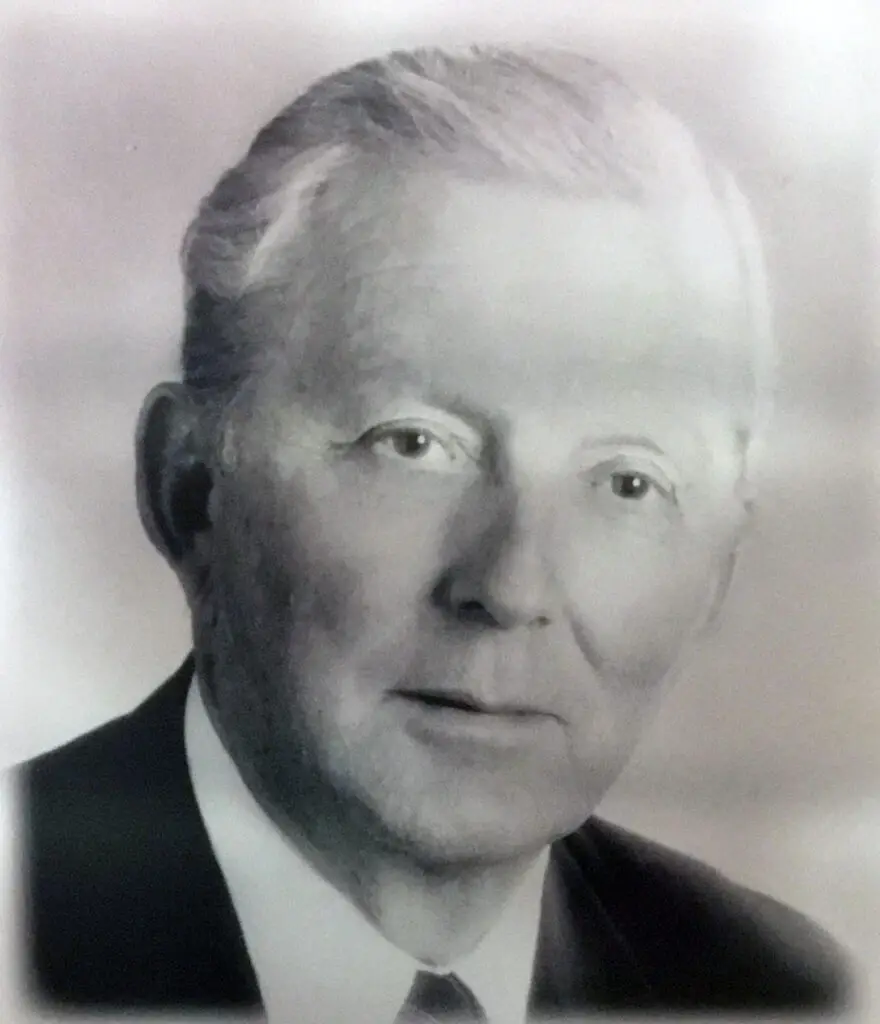
DECIDUOUS #61 WITCH-HAZEL
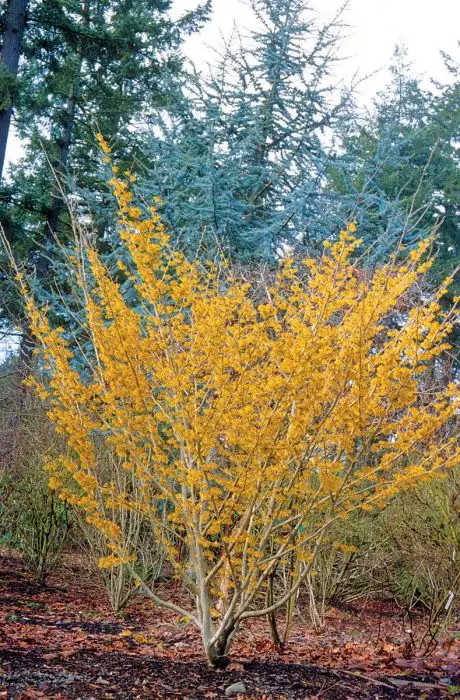
WITCH-HAZEL
CAFE du DIABLE
Hamamelis virginiana L.
Although its Ontario habitat is sparse, it has been found by L. Erie, near Ottawa and Kingston, and on Manitoulin Island. It is known to survive in Plant Hardiness Zone 3. It is often found in a thicket, but can also form a small tree with an irregular crown, about 8m tall.
CAFE du DIABLE has no reference to “black arts” but refers to an OLD ENGLISH word “wice” which means bendable. Stems were used as a divining rod. Orangy-red flowers bloom in fall. Seeds overwinter on the tree before release in the next summer.
In Memory of Arthur H. Kingsmill
Arthur H. Kingsmill B.A.Sc., P.Eng.
Art Kingsmill, an assayer by trade, joined the faculty of the Provincial Institute of Mining in 1945, following its reopening after World War II. In May 1948, the 34 year-old teacher was tragically killed while working at he school. Arthur Kingsmill was inducted into the HSM Hall of Fame in 1970.

DECIDUOUS #62 PUSSY WILLOW
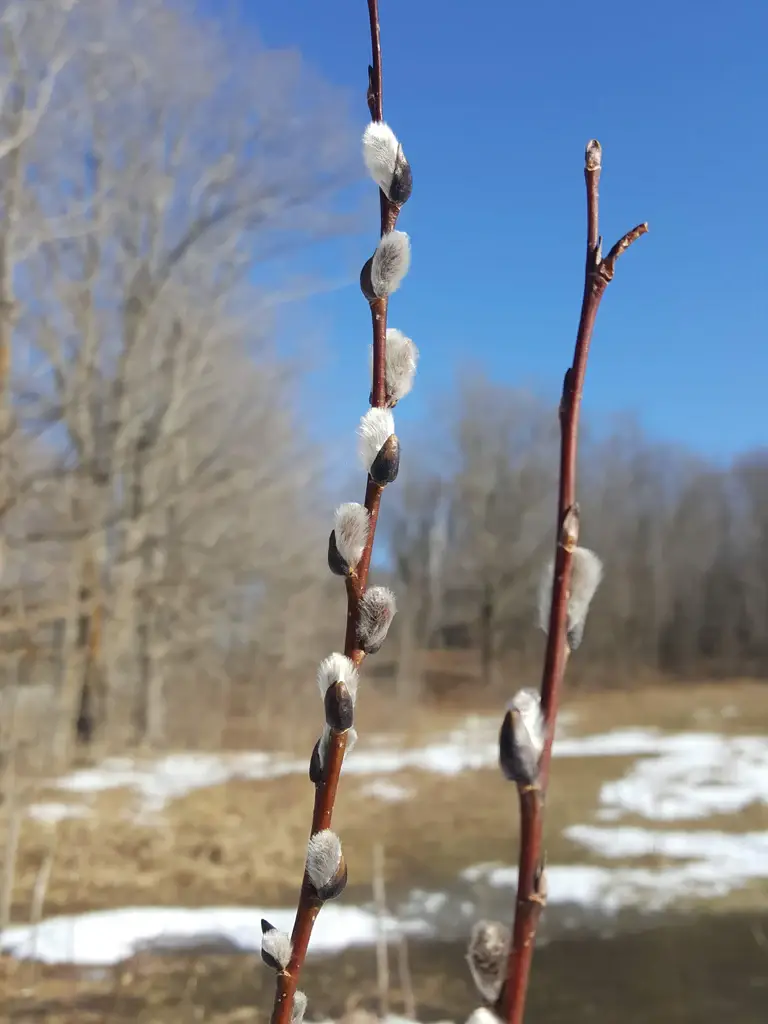
PUSSY WILLOW
SAULE des MARAIS
Salix discolor Muhl.
Baajin (Ojibwe)
The best known of all Canadian willows (& a harbinger of spring) the Pussy Willow is present across Canada. It grows in a clump format, up to 6m high. It prefers loamy, neutral pH, moist soil with full or partial sunlight. (Blooms occur prior to Bebb willow.)
Pussy willow, like all willow, are dioecious. It is the male that produces the attractive white catkins that turn yellow with pollen. Females have dull, greenish catkins that are the pollen receptors via insects. This plant exists to the Arctic Circle (Hardiness Zone 1).
In Memory of Herb Packard
Herb Packard began his teaching career at the Mining School in 1919 upon completion of the new mill building. He taught Milling, Surveying, and Drafting. Pickard left the school in 1924 but rejoined the faculty in 1945, for a three-year period to teach the large class of students from the Department of Veterans Affairs, who arrived after the Second World War. Herb Packard died in 1965.

DECIDUOUS #65 IVORY HALO DOGWOOD
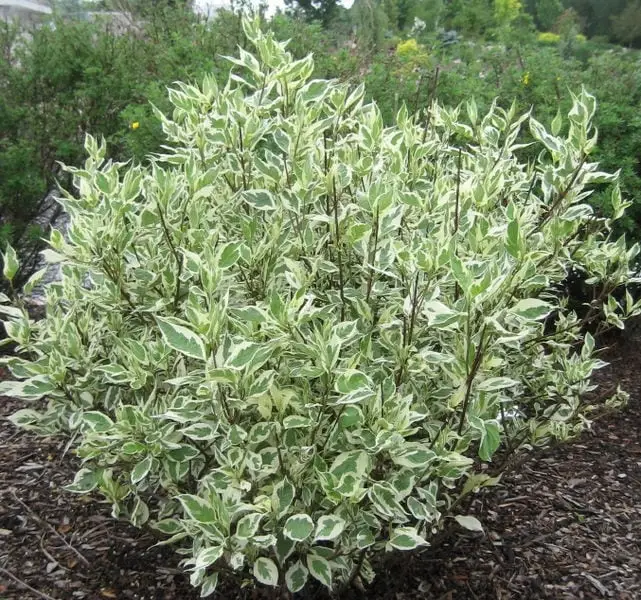
IVORY HALO DOGWOOD
CORNOUILLER Halo Ivoire
Cornus alba ‘Ivory halo’
A hybrid varigated Dogwood, it is suitable in both sun & partial shade. Thriving in Zone 3, the shrub averages 175 cm in height, with a girth that is similar. Foliage is green with white edging, turning purplish-red in fall. The red bark stands out in winter.
IVORY HALO, a hybrid of the Asian Tartarian Dogwood, grows in both sandy and clay soils with a pH between 5.5 & 7.0. It prefers moist, well drained soils, but is adaptable to both wetter and dryer conditions. Prune every 3 years.
In Memory of Donald A. Fraser
Donald A. Fraser B.Sc., P.Eng.
Don Fraser, a Queen’s University Honours graduate in Metallurgical Engineering and a thirty-year veteran with INCO, joined the faculty of the Haileybury School of Mines in 1972. His primary teaching assignment included Milling and Ore Dressing. Don retired in 1983 and the following year he received his life membership in the Canadian Institute of Mining and Metallurgy. Don Fraser died in 2001. He was inducted into the HSM Hall of Fame in 2012.

DECIDUOUS #67 NINEBARK
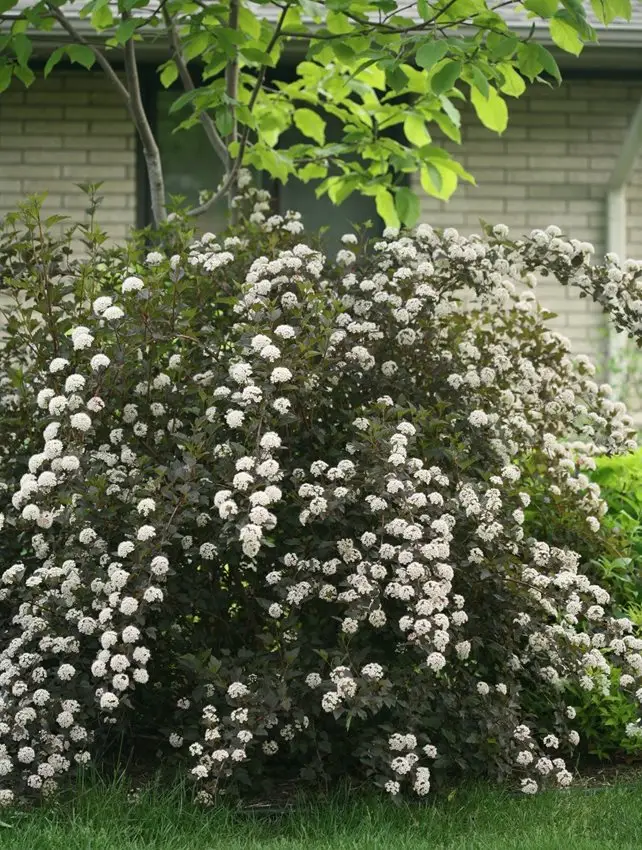
NINEBARK
PHYSOCARPE
Physocarpus opulifolius L.
NINEBARK is a Zone 2 Boreal species, common to N.E. Ontario. It inhabits rocky, sandy, or gravelly soils, and often can be found on gravel bars, shores, and streambanks. Its white flowers are similar to Hawthorn and its leaves resemble highbush cranberry.
PHYSOCARPE lends itself to hybridization. It is a member of the Rose family. Hybrids usually focus on leaf colour, but plant height is also considered. There are 1m dwarf varieties in addition to 2m & 3m specimens. Attractive to birds & bees.
In Memory of Raymond S. Andrecheck
Raymond S. Andrecheck B.Sc., P.Eng.
Ray Andrecheck graduated from the Haileybury School of Mines in 1936. After gaining significant industrial mining experience, he joined the faculty in 1969 where he taught Surveying, Strength of Materials, and Math. Ray Andrecheck died in 1975 at the age of fifty-seven years. He was inducted into the HSM Hall of Fame in June 1979.
